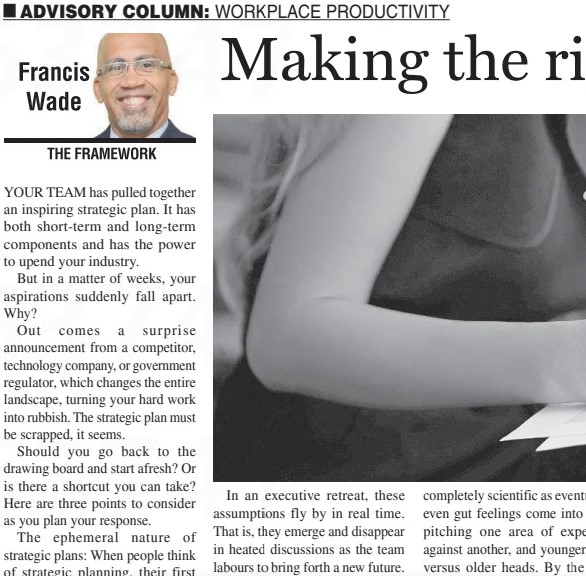In the realm of strategic planning, crafting a comprehensive roadmap for the future can be both exhilarating and daunting. Your team invests time, resources, and creativity to develop a plan that promises to revolutionize your industry and propel your organization to new heights. However, despite meticulous planning, unforeseen disruptions can quickly render your strategic aspirations obsolete. In such moments of uncertainty, understanding the underlying assumptions behind your plan becomes paramount. Here’s why:
Recognizing the Transient Nature of Strategic Plans
Strategic planning often conjures images of meticulously outlined steps and detailed implementation strategies. However, beneath the surface of these plans lie a myriad of assumptions – assumptions that shape the very foundation of your strategic vision. These assumptions emerge during intense brainstorming sessions, fueled by a blend of data, anecdotes, and expert opinions. Yet, amid the flurry of ideas and debates, it’s impossible to validate every assumption conclusively. Instead, strategic decisions are often based on a combination of informed judgment and intuition.
To mitigate the risk of overlooking critical assumptions, it’s imperative to foster an environment of inclusivity and collaboration during planning sessions. By ensuring that all key stakeholders are actively engaged in the process, you can harness a diverse range of perspectives and insights, strengthening the foundation of your strategic plan.
Capturing and Monitoring Assumptions
One of the greatest challenges in strategic planning lies in effectively capturing and monitoring the underlying assumptions that underpin your plan. While participants may leave planning sessions with a sense of confidence in their strategy, the dynamic nature of business environments means that assumptions are subject to constant change. Without a mechanism to track these assumptions, your team may fail to recognize emerging trends or shifts in market dynamics until it’s too late.
To address this challenge, consider implementing a strategy map – a visual representation of the cause-and-effect relationships between key assumptions and strategic objectives. This tool serves as a reference document, allowing your team to monitor the interconnectedness of assumptions and identify potential areas of vulnerability. Additionally, conducting regular “pre-mortem” exercises – where teams anticipate potential points of failure and weak assumptions – can help proactively mitigate risks and enhance strategic resilience.
Preparing for Disruptions
In today’s volatile business landscape, disruptions are not a matter of “if,” but “when.” Whether it’s a competitive threat, technological advancement, or regulatory change, your strategic plan must be robust enough to withstand unforeseen challenges. By embracing a mindset of preparedness and adaptability, your team can navigate turbulent waters with confidence.
Encourage open dialogue and constructive dissent within your team, empowering individuals to challenge assumptions and explore alternative scenarios. By fostering a culture of resilience and agility, you can equip your organization to weather storms and seize opportunities amidst uncertainty.
In conclusion, the success of your strategic plan hinges not only on its vision and objectives but also on the assumptions that underpin it. By acknowledging the transient nature of assumptions, capturing them effectively, and preparing for disruptions, you can enhance the resilience and effectiveness of your strategic planning efforts.

